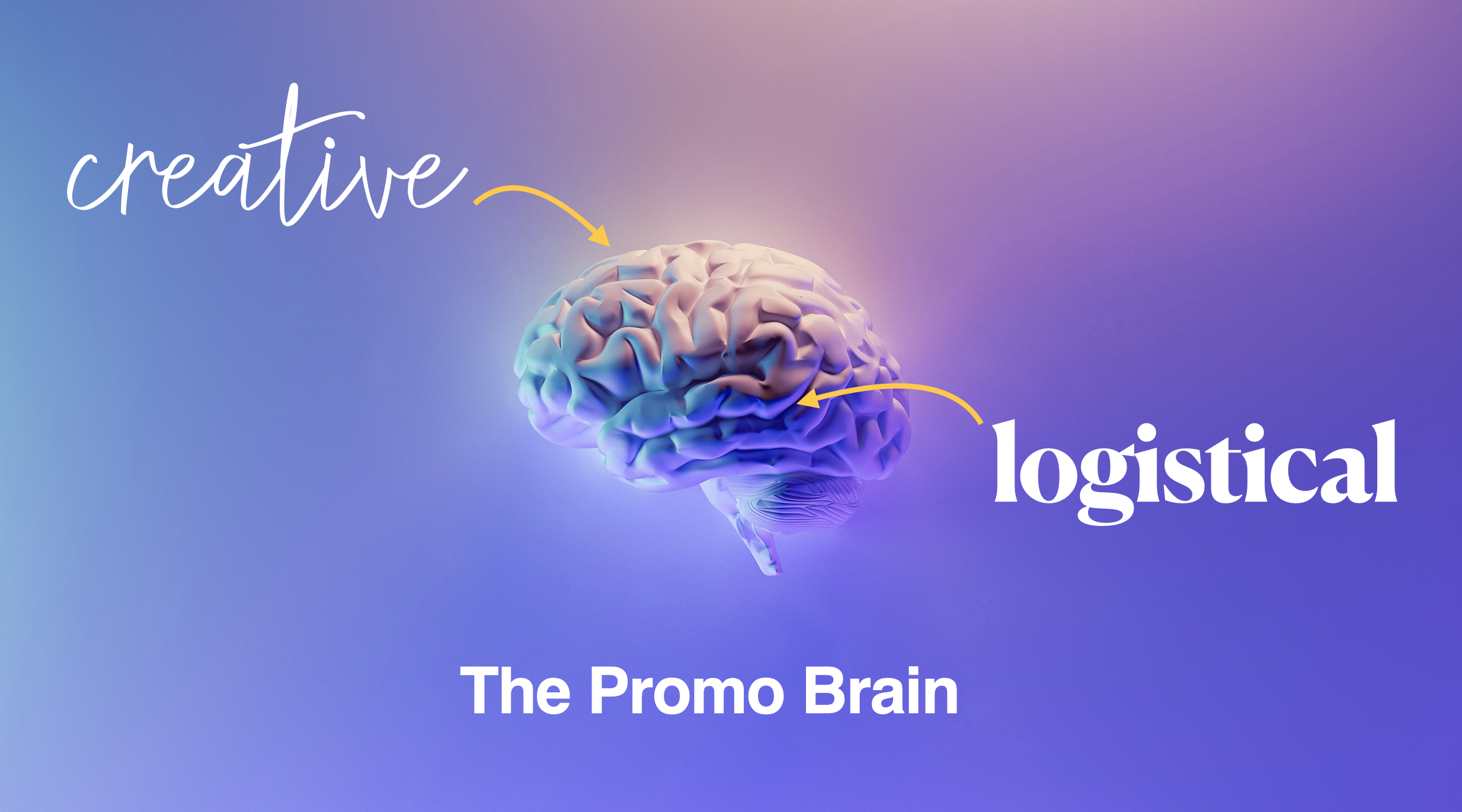Distributors face a demanding new client. Today’s post-pandemic client expects more from you: more consultation, more creative ideas, more unique services.
And it’s your fault, really (and a good problem to have). It’s a result of all your creative problem-solving: During the pandemic, distributors and suppliers were forced to come to the table with consultative solutions for clients.
Example: kitting. Distributors weren’t asked by clients to merely source products, they were asked to build an experience, crafting emotion, messaging, product, branding and fulfillment into a very purpose-driven intent (engagement).
Clients demanded a more strategic relationship and many distributors rose to meet that challenge. As a result, you heightened their expectations for a more sophisticated level of creative service.
Add to this, the modern distributor is called upon to provide a wider scope of products and services than ever before, some of which fall outside of their original scope of “traditional” promotional products. Ask any progressive distributor today and you’ll find that their “product” now extends to anything and everything involving brand expression, from print to promo to digital to physical.
The moment we’ve talked about for years has arrived. Congratulations: We are all now creative agencies. (“Agency” being the operative word here, not meant as “ad agency” in the traditional sense, but rather the functional definition of the word agency: an action that produces a particular effect).
Now that you’ve trained the modern buyer to expect more creative service from you, we must give our time and energy to develop what it really means to be creative in this business.
Understanding the Two Halves of the Promo Brain

The theory persists that we each possess a lateral brain split into two hemispheres.
The left hemisphere of our brain is where our skills like analytical thinking, numbers, and language reside; the right side is where our expression, emotional intelligence, and imagination reside. Left-brain thinkers are known to be logical and analytical; right-brain thinkers are known to be intuitive and creative.
Though it’s an oversimplification (and the science is up for debate), the legend of the two opposites endures for good reason: both sides are needed for you to function. You need to be able to both dream and calculate, in other words, you need to be able to daydream about a vacation (imagination) and plan it at the same time (logistics/analytics).
And a curious phenomenon exists in the stories of successful distributors in our industry, like a single common thread woven through each company.
Most successful distributors are led by a balance of two kinds of leaders. One leader is more analytical (“the numbers people”) and the other is more creative (“the free thinkers”). Both are not only necessary to the life of the business, but if you looked at many successful distributors today, you’ll see their leadership consists of both types. The analytical leader is usually in ops and finance; the creative leader is in sales and marketing. Both are required to bring balance and drive the business forward.
And our teams are a reflection of that leadership, split into two specialties.
An imagination exercise: Pretend your team is one brain split into two parts. One part of your team is comprised of left-brain thinkers, where cognitive tasks and skills reside, like production and logistics. The other side of your promo brain is where the creative, imaginative, and marketing/sales skills reside.
It’s crucial we understand the distinctions, not to categorize people or limit them by defining and putting them in boxes, but by understanding their strengths so that you can maximize their time and energy, and give them the space and tools they need to perform at a high level.
Every team member must understand where their colleagues’ strengths reside.
Back to our client who is demanding more and more creative services from you: Pre-pandemic, the industry excelled at mostly being good at sourcing, finding product and delivering accurate results. Post-pandemic, we must have high-performance teams in both areas, creative and logistical.
Given that your business now needs a high-performance production team in addition to a high-performance creative team, it’s critical we understand what each role needs in order to function at a consistently high level. Here’s a glimpse of what each area needs for success:
The Logistical Side of the Promo Brain
This part of your promo brain lights up when you handle analytical or logistical tasks, like creating orders in your system, sourcing product from suppliers, navigating the supply chain, organizing shipping, handling kitting details, following up with clients, and strategizing fulfillment execution. This part of the promo brain is crucial for delivering results. Members on your team who exercise the logistical side of the promo brain are in account coordinator roles or are production managers or they’re in finance.
What the logistical promo brain needs:
- Everyone getting the details in the system from the beginning. Imagine if accounting didn’t have to bug you for that freight charge? Or if production didn’t have to hold up an order waiting for your final quantity detail?
- Correction: Everyone getting the correct details in the system from the beginning. 66% of all purchase orders today are submitted by distributors to suppliers with either missing information or incorrect information. That means, 6 out of 10 orders you handle today will be wrong and it’s your fault, not the suppliers.
- Clean hand-offs at every stage. At commonsku, we make this effortless, but there are many distributors who unintentionally increase their error rate by simply not having clear hand-offs from sales to production to billing.
- In-app communication at all times! It can’t be stressed enough: in-app communication keeps everyone on the same page at all times. Everyone can see what’s happening with an order just by looking, not by interrupting: emailing/messaging.
- Details that don’t hold them up from doing their work. Less fragmentation, more continuity, and a seamless workflow. “Fragmentation makes you smaller, shallower, angrier. Flow makes you bigger, deeper, calmer,” writes Johann Hari in “Stolen Focus.”
Give your analytical and logistical colleagues some love. The logistical promo brain needs the creative promo brain to meet them in the middle (empathy) and to understand what they need to do an amazing job, on their behalf.
The Creative Side of the Promo Brain
The creative side of the promo brain imagines and visualizes. The creative side intuits experience, expresses emotions into a campaign, develops and comprehends brand and marketing strategy, and leads sales efforts because the right side of the brain picks up on communication cues (verbal and non-verbal) from clients. Above all, the creative side of the promo brain is the one that sparks ideas for clients when they call with a project and makes connections from the supplier’s product to the client’s purpose.
What the creative promo brain needs:
- More time spent proactively thinking of ideas for clients. It sounds so painfully obvious, but the creative brain needs space to think for their clients—to pro-act, not merely react (agency, being the operative word).
- The creative brain needs less distraction, more focus. According to Johann Hari in “Stolen Focus,” the average worker is distracted roughly one in every three minutes. If you’re in a creative role, you’ve likely been distracted from reading this article at least twice. (Hell, I’ve fought a dozen distractions just writing it). For the creative side to do its best work, it needs to be free from distraction.
- And that means self-inflicted distraction. One writer wrote that most often, “interruptions come not from another but from the self within itself.” We are our own worst enemy when it comes to distraction.
- But we don’t get a lot of help with technological distractions (hello, Slack and DMs). The creative side needs any excuse to drop hard thinking for the client project because hard thinking is … hard. We’re wired to choose the easier path.
- The creative brain needs less context switching (switching from one project to another). According to Hari, one study showed that pings, DM’s, checking email, social media, causes a drop in workers IQ by an average of ten points. “That’s twice the knock to your IQ that you get when you smoke cannabis. So this suggests, in terms of being able to get your work done, you’d be better off getting stoned at your desk than checking your texts [Slack, Twitter] and Facebook messages a lot.” Ouch.
The creative brain should be hypervigilant against creativity drain: because we are a deadline-driven + idea-driven business, everything in this industry unintentionally fights against our ability to stay focused.
In his article “Doublethink” in Discover magazine, Carl Zimmer, an award-winning New York Times columnist and author of 13 books about science, wrote about the crucial importance of both sides of the brain working in harmony.
Read this in the context of both sides of your team working together in harmony:
No matter how lateralized the brain can get, though, the two sides still work together. The pop psychology notion of a left brain and a right brain doesn’t capture their intimate working relationship. The left hemisphere specializes in picking out the sounds that form words and working out the syntax of the words, for example, but it does not have a monopoly on language processing. The right hemisphere is actually more sensitive to the emotional features of language, tuning in to the slow rhythms of speech that carry intonation and stress.
Kitting projects are the perfect example of both sides of your team’s brain (logistical and creative) working in harmony. Without the creative side, you wouldn’t have imagined that brilliant campaign, and without the logistical side, the campaign would never arrive correctly or on time.
What if you’re on a small team or are a solopreneur and operate in both halves of the brain all day? It’s even more important that you understand what you need when you function in each respective area. Know the distinction between the kind of work you do. When I write, there are two people writing: a creative and an analytical. A first draft is all free-thinking, then the editor shows up with his bloody pen and makes it worth reading. Both are required, but you need to respect each role inside you and know what each role needs to get a project across the finish line.
High-performance teams respect and power both sides of the promo brain.
This article was originally published in commonsku and was made available through a reciprocal content partnership with Promo Marketing. commonsku is the work-from-anywhere platform that powers your connected workflow enabling you to process more orders and dramatically grow your sales. To learn more or to begin your free trial now, visit commonsku.com.


